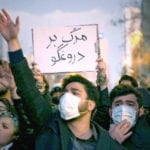 Religion
Religion  Religion
Religion  Weird Stuff
Weird Stuff 10 Horrifying Final Destination-Like Accidents
 Movies and TV
Movies and TV 10 Music Biopics That Actually Got It Right
 History
History 10 Momentous Events That Also Occurred on July 4th
 Animals
Animals 10 Times Desperate Animals Asked People for Help… and Got It
 Movies and TV
Movies and TV 10 Movie Flops That Found Their Way to Cult Classic Status
 History
History 10 Things You Never Knew About Presidential First Ladies
 Movies and TV
Movies and TV 10 Zombie Movies That Will Actually Terrify You
 Humans
Humans 10 Times Scientists Were Absolutely Sure… and Absolutely Wrong
 Our World
Our World 10 Pivotal Moments for Life on Earth
 Religion
Religion 10 Innovations and Discoveries Made by Monks
 Weird Stuff
Weird Stuff 10 Horrifying Final Destination-Like Accidents
 Movies and TV
Movies and TV 10 Music Biopics That Actually Got It Right
Who's Behind Listverse?

Jamie Frater
Head Editor
Jamie founded Listverse due to an insatiable desire to share fascinating, obscure, and bizarre facts. He has been a guest speaker on numerous national radio and television stations and is a five time published author.
More About Us History
History 10 Momentous Events That Also Occurred on July 4th
 Animals
Animals 10 Times Desperate Animals Asked People for Help… and Got It
 Movies and TV
Movies and TV 10 Movie Flops That Found Their Way to Cult Classic Status
 History
History 10 Things You Never Knew About Presidential First Ladies
 Movies and TV
Movies and TV 10 Zombie Movies That Will Actually Terrify You
 Humans
Humans 10 Times Scientists Were Absolutely Sure… and Absolutely Wrong
 Our World
Our World 10 Pivotal Moments for Life on Earth
10 Reasons The Syrian Civil War Might Be Entering Its Endgame
In 2011, things briefly looked hopeful for Syria. The Arab Spring protests had toppled a dictator in Tunisia, and it looked like they might do the same to Bashar al-Assad, arguably the most brutal and hated dictator in the Middle East. Instead, Assad cracked down, and the protests evolved into a savage civil war, which has now lasted four years and killed or displaced hundreds of thousands. But recent losses mean the Assad regime’s days might be numbered, although it’s still not clear exactly what will replace him.
10The Loss Of Palmyra Was The Regime’s Biggest Blow Yet
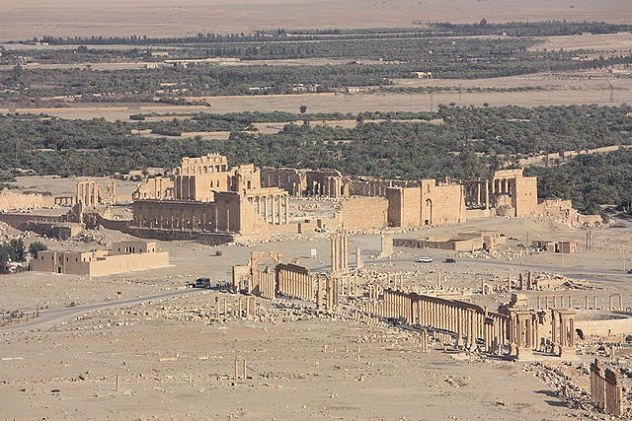
In May, ISIS took the modern city of Tadmur, which includes the magnificent ruins of the ancient city of Palmyra. In the West, the media has mostly focused on the danger to Palmyra’s ancient archaeological treasures, which ISIS considers idolatrous, but the loss might actually prove to be the beginning of the end for the Assad regime.
Tadmur/Palmyra stands at a strategically vital crossroads. Its loss cuts the supply route to Deir ez-Zor, the regime’s last embattled stronghold in the east of the country. The city’s fall also provides ISIS with a clear path to the crucial T4 air base and has allowed them to take the Al-Hail and Arak natural gas fields, which the regime had relied on to provide electricity to its heartland in the west. ISIS has also captured the local phosphate mines, which were one of Assad’s last major sources of income and foreign exchange.
In the longer term, Tadmur could provide ISIS with a staging ground for attacks toward major regime cities like Homs or perhaps even Damascus. And Tadmur sits across a road network that will allow ISIS to more easily move men and supplies between Syria and Iraq. Additionally, Tadmur is the location of one of the regime’s most notorious prisons, memorably described as a “kingdom of death and madness,” which ISIS has gained a PR triumph by destroying. When Deir ez-Zor falls, which it almost certainly will, the regime will have been completely wiped out in the east, badly damaging its claim as the rightful government of all Syria. It’s arguably Assad’s worst blow yet.
9Palmyra Fell Because The Regime Was Weak, Not Because ISIS Was Strong
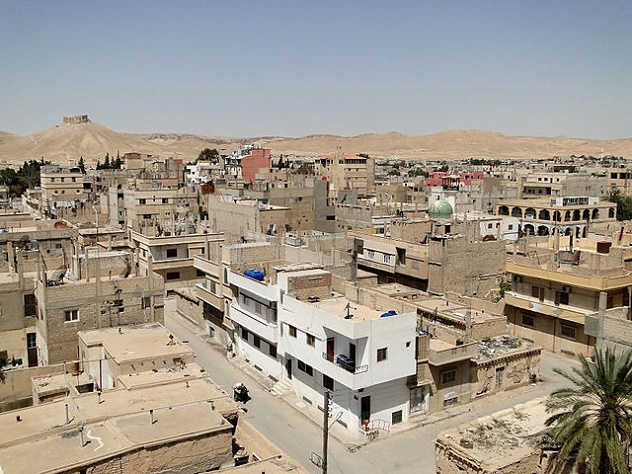
Earlier this year, the area around Tadmur/Palmyra was defended by Assad’s elite special forces: the Tigers and the Desert Falcons. But the regime pulled those units out to try and defend the key northern city of Idlib from the newly formed Jaish al-Fatah (“Army of Conquest”), an alliance of smaller rebel groups. The plan didn’t work—Idlib fell at the end of May, mauling both units (a leaked video of the Tigers’ commander begging for ammunition didn’t help morale) and badly damaging the regime’s position in the north. Jaish al-Fatah followed up their victory by taking the important town of Jisr al-Shughour. Meanwhile, the move left regime forces in Palmyra weak enough for ISIS to move in.
With Assad’s forces crumbling and no longer capable of fighting on multiple fronts, further losses are inevitable. In fact, the regime is so weak that they may have to change their entire strategy. Previously, the regime tried to hold territory and launch attacks across Syria. But now, with as few as 80,000 demoralized troops left, the regime may have switched to simply holding on to its heartland around Damascus and the coast. One indication of this might come from Assad himself, who has recently ditched his relentlessly optimistic tone and begun speaking openly about the need to continue fighting despite defeats. Either way, the long Syrian stalemate is definitely a thing of the past.
8In Fact, ISIS Is Growing Weaker
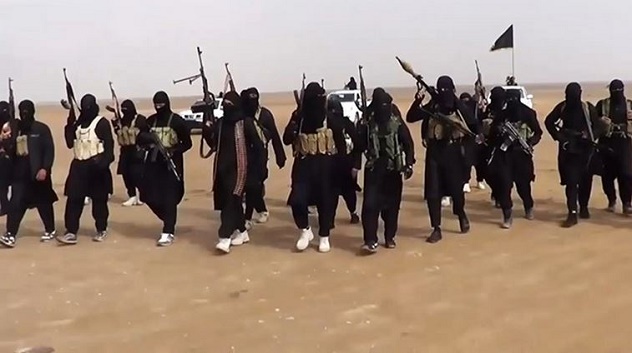
The capture of Palmyra and the Iraqi city of Ramadi last month made it seem as though ISIS was growing in strength. But the attacks were arguably a sign of weakness. ISIS has a complex apocalyptic theology underpinning its claim to be a caliphate which all Muslims owe allegiance to. This ideology essentially requires expansion and military success as a demonstration of God’s approval. So ISIS’s failed attack on the Kurdish city of Kobane, which they were forced to abandon earlier this year, wasn’t just a humiliating defeat—it was an existential blow, forcing the caliphate to take risks to maintain itself.
In Iraq, plans to retake Ramadi are already underway, but ISIS’s biggest problem is arguably in northern Syria. Last month, the Syrian Kurds received approval from the US-led coalition to link Cezire and Kobane cantons, which were separated by a strip of ISIS territory, including Tal Abyad, where ISIS smuggled weapons and fighters in from Turkey. Just a few days ago, the Kurds and allied Arab rebels succeeded in taking the town, uniting the cantons and cutting ISIS off from its most important supply line. Apparently, ISIS tried to reinforce the town at the last minute, but the extremists were “focusing so much on Ramadi and Beiji they lost sight of the back door.” With the Kurds now pledging to strike south at the caliphate’s capital of Raqqa, the ISIS situation in Syria hasn’t looked this precarious in a long time.
7The Other Rebels Are Getting Stronger
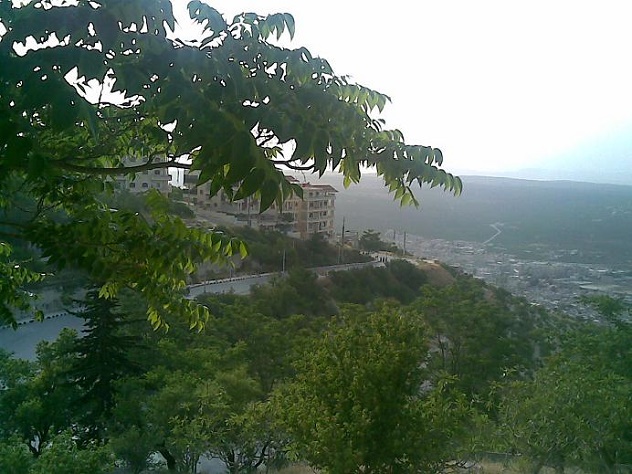
The rebel takeover of Idlib wasn’t a fluke—the non-ISIS rebels in the north are now a much more significant force. When the war started, the rebels’ foreign backers in Saudi Arabia, Qatar, and Turkey tried to establish a leadership structure consisting of a series of military councils controlled by “the Istanbul Room.” To reassure Western concerns about Islamic radicals, secular former military officers were appointed to lead the military councils. The system worked initially but gradually collapsed amid allegations of corruption and favoritism. Instead, the rebels splintered to the point that independent battalions were regularly formed by a few cousins with video recording equipment (vital for making YouTube videos) and a backer in the Gulf. Cooperation between groups was rare, and the rebels remained ineffective.
But that has changed, ironically thanks to the rise of ISIS, which alarmed Saudi Arabia and other regional partners. When the Saudi king passed away in January, his successor, King Salman, adopted a more active stance against perceived threats to Saudi interests (hence the recent intervention against Houthi rebels in Yemen). In March, the Saudis called a meeting with the rebels’ other backers in Turkey and the Gulf states. They agreed to offer the rebels more support and advanced weaponry, but only on the condition that they agreed to work together and coordinate operations. The result is a newly cohesive rebel front poised to push toward Homs and Latakia.
6Fundamentalists Increasingly Dominate The North
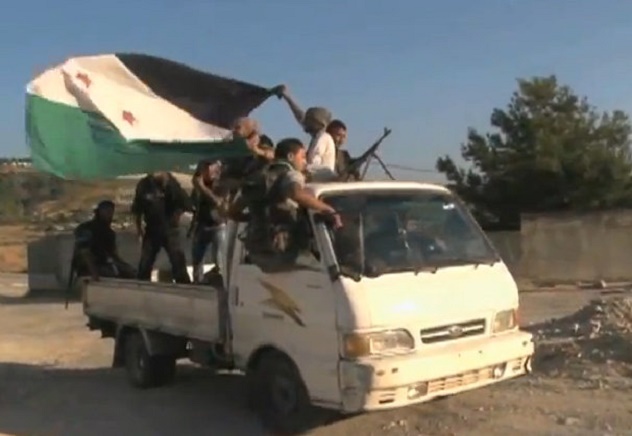
Idlib was taken by Jaish al-Fatah (JaF), which includes Al-Qaeda’s Syrian affiliate, Al-Nusra Front, as well as less radical Islamist groups. The moderate Free Syrian Army is not a member of JaF but has recently been coordinating with it. Al-Nusra itself has been toning down under pressure from JaF’s foreign backers, taking a hands-off approach in Idlib and insisting it wants civil rule rather than a theocratic state. Still, the dominance of Al-Nusra and the (larger) Islamist group Ahrar al-Sham is not good news for anyone hoping for a moderate, secular government to replace Assad. However, JaF’s backers in the region are now so desperate for a resolution to the conflict that they are no longer particularly bothered by Western disapproval.
It has been suggested that Al-Nusra’s new willingness to work with moderates might represent a genuine ideological shift by the group. That’s certainly what their backers in the Gulf are hoping, with a prominent Al Jazeera correspondent suggesting that “the West can react to Nusra as they deem suitable. Washington used to depict the PLO as a terrorist outfit, but then took a U-turn.” However, Al-Nusra still publicly pledges allegiance to Al-Qaeda and has been accused of numerous human rights violations.
Also worrying is the alleged presence of a shadowy organization known as “the Khorasan Group” in the west, “the strangers with the horses” in Syria, and “they don’t exist, stop asking about them” by Al-Nusra. A small group of men from Central Asia, the group formerly remained aloof from the Syrian War but supposedly played a small role in the attack on Idlib. Little else is known, and the group may not even exist, although the US apparently considers them a real threat.
5But Moderates Are Growing In The South

While JaF and ISIS compete for dominance in the north, the main rebel force in the south of the country is the moderate, US-backed Southern Front (whose logo is shown above), which is dominated by the Free Syrian Army (FSA). With a command center in Jordan’s capital, Amman, the Southern Front has recently had some notable successes. In April, they fully captured the border between Jordan and Syria, further isolating Assad. And just this month they captured the strategic Brigade 52 army base, putting them in control of most of Daraa province. They should take the provincial capital before long.
But it’s unclear what the Southern Front’s successes mean for the wider war. The Brigade 52 base lay on a key road to Damascus, presenting the rebels with a clear path to Syria’s capital, which is less than 160 kilometers (100 mi) away. Senior JaF figures have also said they will soon strike toward Damascus, while ISIS’s capture of Palmyra puts it closer to the capital than ever. Al-Nusra has called for a unified rebel army to take the city, but it’s unclear how far the FSA is willing to ally with the Al-Qaeda affiliate.
No side is ready to launch an attack just yet—the Southern Front needs to consolidate in Daraa, JaF will probably focus on Homs or Latakia next, and ISIS has problems in Iraq—but if Assad crumbles, things might end up in a three-way race for Damascus between moderates, Islamists, and the freakshow that is ISIS.
4ISIS Will Fight The Other Rebels In Any Case
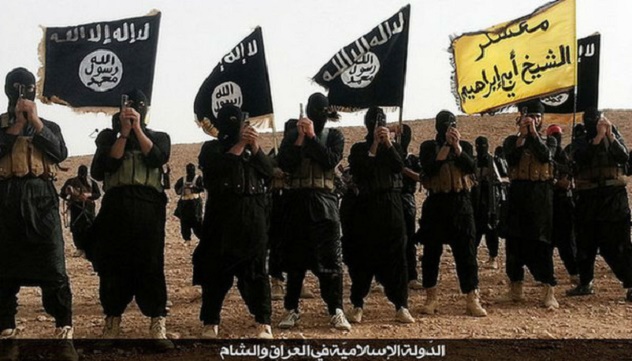
As the regime retreats before ISIS and JaF, it becomes increasingly likely that the latter two groups will come into conflict with a deadly new enemy: each other. Aside from a shared dislike of Assad, ISIS and the other rebels have nothing in common but a mutual loathing. In addition to the expected competition for fighters and resources, ISIS considers that all Muslims have a duty to pledge loyalty to the rightful caliphate (by which they mean ISIS), which the rebels have signally failed to do.
Meanwhile, Al-Nusra’s leader, Abu Muhammad al-Joulani, was originally sent to Syria by ISIS leader Abu Bakr al-Baghdadi, back when he was still leader of Al-Qaeda in Iraq. Joulani’s split from Baghdadi’s organization sparked ISIS’s split from Al-Qaeda and created serious bad blood between the two organizations. And when ISIS first entered Syria, its brutality and penchant for public executions alienated most other rebel groups, who joined with Nusra to drive the caliphate from the west of the country in early 2014.
The situation has stabilized since then, although sporadic clashes have continued, but now the conflict looks likely to intensify. In particular, both groups look poised to strike toward Homs, which could create a terrible three-way fight between ISIS, Assad, and JaF. But whatever happens, conflict between ISIS and JaF is inevitable at some point. That’s bad news for ISIS, since the new rebel alliance is a cut above anything it’s faced before. With more men and better arms than the Islamic State, JaF would have a huge advantage over its eastern rivals.
3The Druze Are Struggling To Stay Neutral
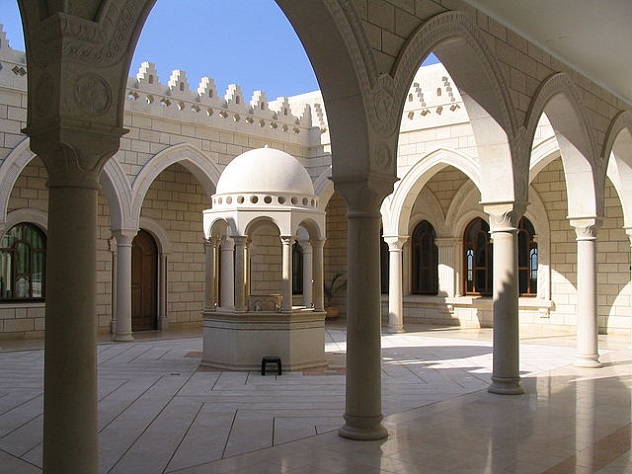
The Druze are followers of a small religion which split from Shia Islam in the 11th century. They make up around 3 percent of the population in Syria and are also a significant presence in Israel and Lebanon, where they played a key role in the civil war of the ‘70s and ‘80s. In Syria, the Druze have tried to stay out of the conflict, maintaining nominal loyalty to the Assad regime but seldom participating in any kind of military action. Since most Syrian Druze are located in a part of the south where fighting has been minimal, they’ve largely been successful in keeping out of the war. Now, that looks set to change.
The advance of ISIS through Palmyra has created some problems for the Druze, with one of their villages coming under attack from the self-declared caliphate in May. But the real flashpoint might just be beginning, with reports that Al-Nusra fighters slaughtered more than 20 Druze in the north of the country earlier this month, apparently after a bizarre incident where a Nusra fighter trying to commandeer a house was beaten with a shovel. It was also reported that Druze militia fighters helped the government fight off an Al-Nusra attack on an army base. Meanwhile, tensions with the government have been growing as it becomes clearer that Assad increasingly lacks the strength to protect the Druze community. Recently, Assad had to pledge that Druze conscripts would be deployed only in their home areas.
To further complicate matters, it has been speculated that further attacks could draw in the Lebanese Druze or even Israel, where the Druze serve in the army and have considerable political clout. However, Lebanese Druze leaders have tried to calm the situation, saying the community needs “neither Assad nor Israel,” and the Israeli government has said it won’t intervene directly. But if the war continues to expand into the Druze heartland in Sweida province, it’s hard to see how the Syrian Druze (at the very least) can avoid being pulled in.
2Assad’s Allies Are Running Out Of Steam
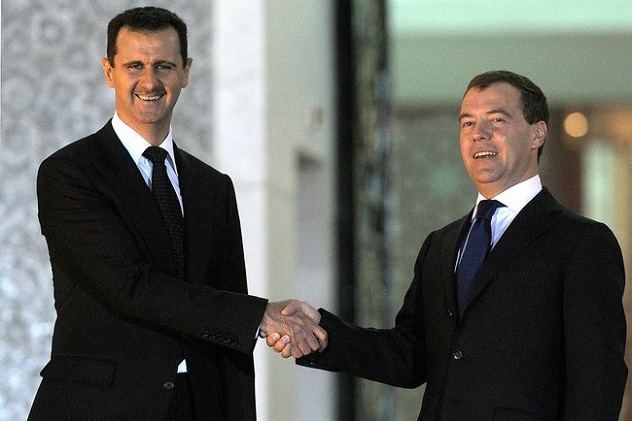
In the early days of the Syrian uprising, when it looked like Assad couldn’t possibly survive, he was rescued by his allies: Russia and Iran. Russia supplied arms and diplomatic support, while Iran sent Qassem Suleimani, the head of the elite Quds Force, which carries out operations outside Iran. Suleimani took control of the war effort, stabilizing the situation and forcing Assad’s squabbling forces to cooperate effectively. He even persuaded Hezbollah to cross the border from Lebanon, resulting in some major successes in the south of the country. Russia and Iran saved Assad. The question is, can they do it again?
In Russia’s case, the answer appears to be no. Although Putin recently made another verbal show of support for Assad, the country is pulling its advisers from Syria, is downsizing its embassy staff, and has recently declined to repair Assad’s precious fighter jets.
Iran has been more bullish, pledging to continue support and allegedly flying in troops to defend Damascus. Support for Assad is a key plank of Iran’s foreign policy and they won’t abandon him, but the $6 billion they spend annually on Syria is only impressive relative to Tehran’s strained military budget. Iran can support the regime, but they can’t fight its battles, and the current level of support hasn’t prevented the recent routs. The one light at the end of the tunnel might be a potential cash windfall from a mooted deal to end US nuclear sanctions, but experts now think that falling oil prices mean that most of that money will have to be spent at home. Plus, with the way things are going, most of Syria might be lost to Assad before any deal can be reached.
1The Regime’s Fall Is Looking Likely
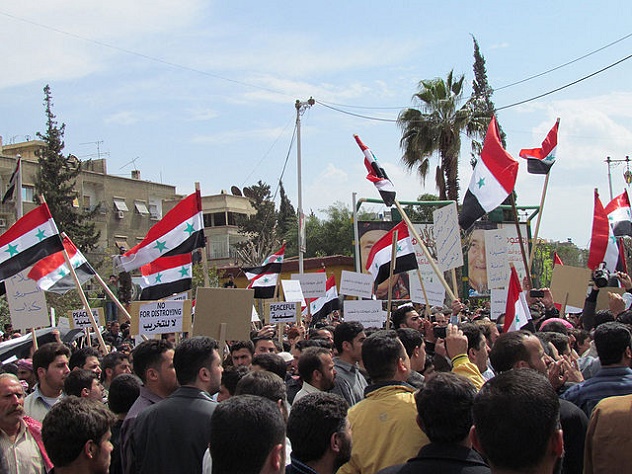
So what options are left for Assad? The situation isn’t a total disaster—the regime still controls the Syrian heartland and most of its major cities. He can count on support from Iran and maybe some limited assistance from Russia and the Druze. But his military is increasingly ineffective, the rebels are growing in strength, and strategic losses in Palmyra, Idlib, and Daraa mean his control over the line of cities from Aleppo to Homs suddenly looks shaky. Revelations about his regime’s use of torture, chemical weapons, and barrel bombs means the West will rightly never support him. The European Union is sanctioning his supporters.
His best bet might be withdrawing to the Alawite-dominated areas of the west, where he has broad support, and settling down to rule a Syrian rump-state while the rebels fight it out over the rest. Officially, the regime has strongly rejected this option, insisting they will fight for every city, but it’s hard to know what they’re really thinking. And even if they did stage a strategic retreat, it’s hard to see the rebels allowing an Assad government to continue unmolested anywhere in Syria. The Americans are encouraging Russia and Iran to call on Assad to step down, paving the way for a transition to a more acceptable regime, but neither seems inclined to do that.
But if Assad’s position keeps deteriorating like it has in the past few months, then the choice could be made for them. It’s rumored that senior Assad figures are applying for visas for their families, while US officials say that “based on current trend lines, it is time to start thinking about a post-Assad Syria.” Former Ambassador Robert Ford thinks his loss was always inevitable, since “the reality is that the Syrian war is one of attrition. And minority regimes usually do not fare well in prolonged wars of attrition.” It won’t be a matter of days or weeks, but recent events could spell the beginning of the end for one of the Middle East’s most hated dictators. The only question is, what will replace him?







